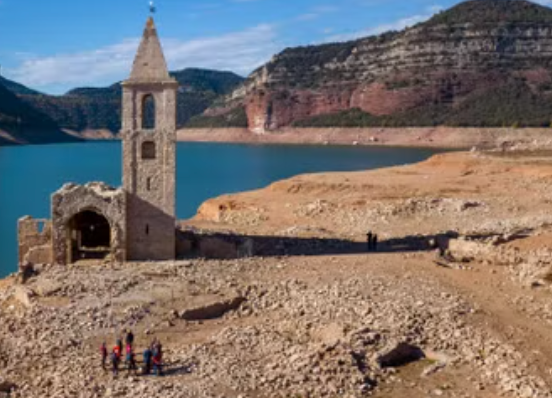Climate crisis made April heatwave in Spain and Portugal ‘100 times more likely’
Morocco and Algeria also experience temperatures of 40C plus
Your support helps us to tell the story
From reproductive rights to climate change to Big Tech, The Independent is on the ground when the story is developing. Whether it's investigating the financials of Elon Musk's pro-Trump PAC or producing our latest documentary, 'The A Word', which shines a light on the American women fighting for reproductive rights, we know how important it is to parse out the facts from the messaging.
At such a critical moment in US history, we need reporters on the ground. Your donation allows us to keep sending journalists to speak to both sides of the story.
The Independent is trusted by Americans across the entire political spectrum. And unlike many other quality news outlets, we choose not to lock Americans out of our reporting and analysis with paywalls. We believe quality journalism should be available to everyone, paid for by those who can afford it.
Your support makes all the difference.A record-breaking heatwave which gripped southern Europe and North Africa last month was made “at least 100 times more likely” because of the climate crisis, a study has found.
Spain, Portugal, Morocco and Algeria experienced temperatures around 40C at the end of April – 20C degrees higher than normal for the time of year.
The extreme heat would have been “statistically impossible” in the absence of human-induced global warming, according to World Weather Attribution (WWA), a coalition of international scientists.
The heatwave study, like others carried out by WWA, quantifies the role that climate change plays in extreme events by analysing weather data and computer models.
Researchers looked at the average maximum temperatures for three consecutive days in April across southern Spain, Portugal, Morocco, and northwest Algeria.
Climate change made the April heatwave at least 100 times more likely – with temperatures up to 3.5C hotter – than if the world hadn’t heated up by 1.2C since the 1800s.
“As the planet warms, these situations will become more frequent and [we] call for long-term planning, including implementing sustainable agricultural models and effective water management policies,” Fatima Driouech, associate professor at the Mohammed VI Polytechnic University and report author, said.
The extreme temperatures in the Mediterranean are increasing faster than climate models have predicted, the study also found.
“The fact that temperature trends in the region are higher than what models predict shows that we need to better understand the regional effects of climate change so that we can adapt to even more extreme heat in the future,” Sjoukje Philip, researcher at the Royal Netherlands Meteorological Institute, said.
This unseasonal heat follows a long-running drought in parts of Europe that has depleted reservoirs, decimated crops and contributed to the outbreaks of major wildfires.
Heatwaves were responsible for 4,000 deaths in Spain and over 1,000 deaths in Portugal in 2022, according to the World Health Organisation.
On average 262 people die each year from extreme heat in Algeria, according to WHO. Morocco registers 250 deaths, and Tunisia 116 fatalities on average annually.
At a global level, the climate crisis is driving more intense and frequent heatwaves, that arrive earlier in the year, with climate experts calling for better preparedness.
“Early season heatwaves tend to be deadlier as people have not yet prepared their homes or acclimated to summer temperatures,” Roop Singh, senior climate risk adviser at the Red Cross Red Crescent Climate Centre, said.
“In Spain, for example, we saw heatwave adaptation measures put in place earlier than usual, which is exactly the type of adaptive heat action we need to see more of to reduce preventable deaths from heat.”
And the extreme heat looks set to be a continuing threat in the Mediterranean as summer arrives.
“The Mediterranean is one of the most vulnerable regions to climate change in Europe,” Friederike Otto, senior lecturer in climate science at the Grantham Institute for Climate Change and co-founder of WWA, said.

“The region is already experiencing a very intense and long-lasting drought and these high temperatures at a time of the year when it should be raining is worsening the situation.”
“Without rapidly stopping the burning of fossil fuels and adaptation towards a hotter, drier climate, losses and damages in the region will continue to rise dramatically,” she warned.
As global temperatures continue to rise, increasingly severe heatwaves will continue, according to the latest assessments from the United Nations’ top scientific body, the Intergovernmental Panel on Climate Change (IPCC).
Last month temperature records were broken across a dozen countries in Asia with heatstroke deaths reported in India and Thailand.




Join our commenting forum
Join thought-provoking conversations, follow other Independent readers and see their replies
Comments